

Why PLAY is Important to Your WORK. This is a question that holds within it, its own answer.
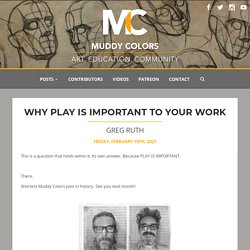
Because PLAY IS IMPORTANT. There. Shortest Muddy Colors post in history. You Don’t Need to PracticeILLUSTRATION AGE. [Editor’s Note: Guest Post and Illustration by Dave Arcade.]
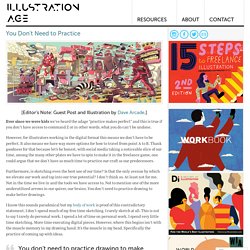
Ever since we were kids we’ve heard the adage “practice makes perfect” and this is true if you don’t have access to command Z or in other words, what you do can’t be undone. However, for illustrators working in the digital format this means we don’t have to be perfect. It also means we have way more options for how to travel from point A to B. Thank goodness for that because let’s be honest, with social media taking a noticeable slice of our time, among the many other plates we have to spin to make it in the freelance game, one could argue that we don’t have as much time to practice our craft as our predecessors. Furthermore, is sketching even the best use of our time? The essential guide to foreshortening in art. AnatoRef. Untitled. A free, exercise based approach to learning the fundamentals of drawing. When I was younger, I was taught that one could practice, and perhaps pick up a little here and there, but if you weren't born with the talent you wouldn't get far.

The few drawing courses I took in school, and even those at the local community college seemed to reinforce this notion. Just draw, they'd say. Keep trying until it clicks, and if it doesn't click, oh well. Here, we approach things differently. Create powerful artistic compositions: 21 pro tips. A strong composition is crucial to a successful piece of art. It's what attracts a viewer's eye, and what holds their attention once they take a closer look. It can mean the difference between an action-packed piece of art and a solemn, contemplative one. But how do you make a composition convey the mood you want, and what is it that makes a composition successful? There are a many long-standing rules regarding what makes a good composition, such as the Golden Ratio, the Golden Spiral and the Rule of Thirds.
But in my opinion they aren't really rules at all... Think of them as suggestions… or better yet, as optional templates. Video Library. The divided ball and plane method. We have introduced a couple of approaches for constructing the head.
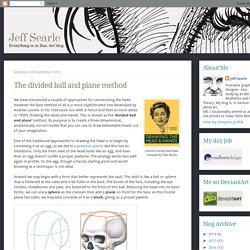
However the best method of all is a more sophisticated one developed by Andrew Loomis in his 1939 book Fun With A Pencil and then in more detail in 1959’s Drawing the Head and Hands. This is known as the ‘divided ball and plane’ method. How to draw and paint - 95 pro tips and tutorials. Every month, ImagineFX magazine is inundated with queries from digital artists looking for advice on a specific problem they are having with their drawing and painting projects – as well as their usual hit of hints, tips and inspiration.

ImagineFX has a wealth of professionals on hand to answer those questions, provide tips on how to draw better, and provide tutorials for those learning how to draw and paint. They can even come to the aid of fellow pro artists who have become frustrated by a specific technique. 15 fantasy portrait tips. Fantasy portraiture is my favourite subject.
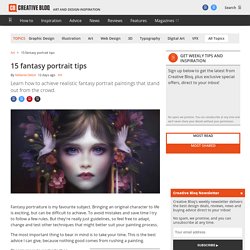
Bringing an original character to life is exciting, but can be difficult to achieve. To avoid mistakes and save time I try to follow a few rules. But they're really just guidelines, so feel free to adapt, change and test other techniques that might better suit your painting process. The most important thing to bear in mind is to take your time. This is the best advice I can give, because nothing good comes from rushing a painting.
10 top tips to improve your sketching skills. How to use reference images correctly: 8 essential tips. If you are an artist learning how to draw and paint in a representational style, chances are that you have used a reference image in your work at some point.
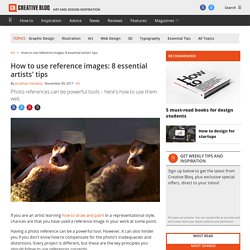
Having a photo reference can be a powerful tool. However, it can also hinder you if you don’t know how to compensate for the photo’s inadequacies and distortions. Every project is different, but these are the key principles you should follow to use references correctly. 01. Don’t copy the reference exactly The temptation to copy every pixel of a photo reference is always there for an artist. 02. Surface fragments: How the Old Masters created the look of Gold in Painting. The detail (above) from Van Loo's painting, Marie Leszczinska Queen of France, is fascinating to me.
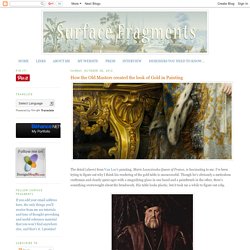
I've been trying to figure out why I think his rendering of the gold table is unsuccessful. Though he's obviously a meticulous craftsman and clearly spent ages with a magnifying glass in one hand and a paintbrush in the other, there's something overwrought about the brushwork. His table looks plastic, but it took me a while to figure out why. Holbein was, of course, a master at painting the detailed effects of light and shade on any number of textures. I examined his Portrait of Charles de Solier (above) for clues as to his technique for painting gold.
Local color and value are notoriously hard to read, so I took color samples from the sword handle, (a) through (e) above, and then de-saturated them to get their values. The values are all gathered tightly around the bottom of the spectrum, between Value 1 and 3. Art Advice I'd Give Myself If I Had to Start From Scratch. How to Choose Colours that Work! Foundations of Light and Shadow. The Value Game.
Kim Jung Gi Sketch Collection, News, and More! How to Draw: Foreshortening with the Coil Technique. Marshall Vandruff. 3d Total Digital Painting Tutorials. Cartoon Fundamentals: How to Draw Cartoon Hands. The human hand is probably one of the hardest things to learn how to draw, since it can take many forms and, thus, express varied emotions.
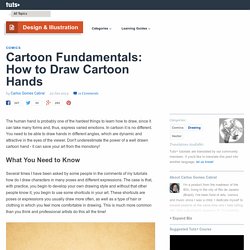
In cartoon it is no different. You need to be able to draw hands in different angles, which are dynamic and attractive in the eyes of the viewer. Don't underestimate the power of a well drawn cartoon hand - it can save your art from the monotony! Several times I have been asked by some people in the comments of my tutorials how do I draw characters in many poses and different expressions. The case is that, with practice, you begin to develop your own drawing style and without that other people know it, you begin to use some shortcuts in your art. The fact is that doing this with hands is very difficult! The hand consists of several different bones, particularly the fingers, which means that they have different sizes and could bend in different directions. Starting from the back of the hands, let's draw the following simple semi circle: Excellent!
How to Transform Your Imagination to Reality. Posted on 28.

Apr, 2010 by DAS Team in Articles Hello, my name is Nick Deligaris. I’m 28 years old and I have studied graphic design for 4 years. How to improve your drawing. How to Use Good Reference Photos for Landscape Painting. The problem is knowing how to choose and use a good photo. This is an important step to the success of your finished painting. Problems can arise when the artist relies too heavily on photographs for their soul inspiration because photos obviously lack the depth, value, color and saturation of reality. For instance, the beautiful colors and details of a shadow are generally lost within a photograph, as explained below in Rusty’s demonstration. This is why most professional artists make outdoor plein air sketches of their landscape subject, along with reference photographs to be used in the studio.